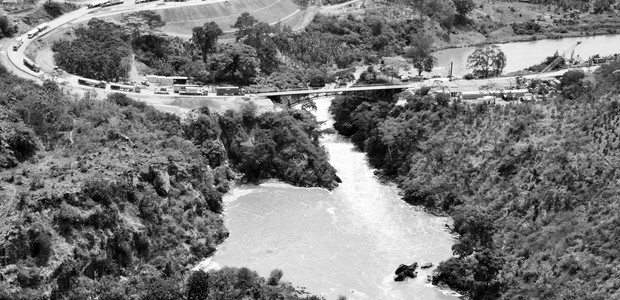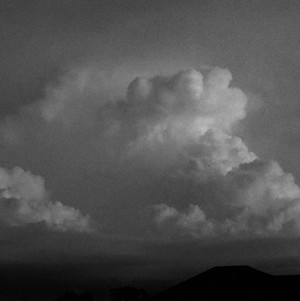How to power booming industries

The three countries are jointly implementing the Regional Rusumo Falls Hydroelectric Project that is expected to be completed by 2020.
But observers now say the project ought to open-up opportunities for cross-border electricity trading among the equatorial lakes countries.
Dr Philip Mpango, Minister of Finance and Planning in Tanzania, told ‘The Niles’, that a “plan is being considered to connect the new transmission line to the state grid”.
He said the plan is to allow the power line to help improve economic integration and contribute to poverty reduction.
Facing an energy deficit
People in Tanzania, Rwanda and Burundi are part of the over 500 million Nile Basin population – most of them facing an energy deficit. Other countries in the region include Uganda, Kenya, Dr Congo, South Sudan, Ethiopia, Eritrea, Sudan and Egypt.
Since 2003, countries in East Africa have been interconnecting their power lines to improve supply, stabilise access and foster trading in electricity across national borders.
Late 2017, Uganda signed a Memorandum of Understanding with South Sudan to extend electricity to South Sudan’s border towns of Kaya and Nimule from Kampala. The country also exports over 50 megawatts of electricity to Kenya, about 15 megawatts to Tanzania and about 0.3 megawatts to the Democratic Republic of Congo.
Tanzania’s government is committed to ensuring we have reliable energy supply.”
Tanzania’s Energy Minister Dr Medard Kalemani explained that his country has constructed a 400-kilovolt power transmission line that interconnects its national power grid with Kenya’s. The Isinya–Singida High Voltage Power Line, according to the minister, is near completion and is funded at the value of US$ 309 million.
“We have the infrastructures,” said the energy minister. “Tanzania’s government is committed to ensuring we have reliable energy supply to power the booming industries,” he added.
Initially, Tanzania was planning to import electricity from Ethiopia through Kenya and Ethiopia and Kenya had signed a US$ 200 million five-year cross-border integrated deal in December 2015.
But reports from the government indicate, that the second East African economy aiming to become a middle-income country by 2025, will be pumping more funds into the Rufiji Hydropower Project, expected to generate extra 3,000 megawatts.
“We’re also expecting to generate 1,000 megawatts from natural gas into the national grid,” the state minister said. Tanzania has the second largest natural gas reserves of 57.25 trillion standard cubic feet (TCF).
Eng. Innocent Ntabana, the NBI Executive Director said in Ethiopia recently, although it may seem the project adds close to nothing to cover the region’s electricity demand “it is a living example of shared benefits in the region”.
He said countries are connected through the world’s longest river – the Nile – and must sustain a shared vision of cooperation in sectors such as water, energy and food.
Work at the 80 megawatts Regional Rusumo Falls Hydroelectric Project, which began in March last year is near 40 per cent of completion. It involves the construction of a power generation plant at the cost of US$ 340 million and is funded by the World Bank.
The African Development Bank released US$ 121 million to finance transmission lines that will connect the power plant to the national grids in the three countries.
Observers say upon completion of the project Tanzania can export its excess energy to Rwanda, Burundi, Kenya, Uganda, South Sudan and Dr Congo.
Nile Equatorial Lakes Subsidiary Action Program (NELSAP) Power Projects Program Officer, Grania Robomboras, says the energy resources are unevenly distributed in the region.
NELSAP is one of two investment programmes under the Nile Basin Initiative (NBI). Under its Power Trade and Development programme, it oversees interconnection projects that are multinational in nature and consists of the construction of 440, 220 and 110-kilovolt transmission lines and substations. It also interconnects the electric grids of the Nile Equatorial Lakes region – Burundi, Kenya, Democratic Republic of Congo (DRC), Rwanda and Uganda.
Some of the projects include the Uganda-DR Congo (Beni-Bunia) Power Transmission Line, Kenya-Tanzania Power Interconnection and the Rusumo Transmission project.
Economic progress: beyond water
The “emerging challenge is every country now struggles to address problems it faces, all alone,” says Dr Nicol, who is a political scientist and Strategic Programme Leader at the International Water Management Institute in Addis Ababa.
Every country now struggles to address problems it faces, all alone.”
He urges the Nile Basin Initiative to engage policymakers, think tanks and the private sector at national levels to deliberate on the economic progress beyond waters.
“There should be new co-operations. The energy-water nexus is vital to generate employment opportunities, foster agricultural transformation and economic growth,” he says.
Former Minister of Water Resources in Sudan, Prof Seifedin Hamad Abdalla, is optimistic the initiative has helped resolve a technical problem and that member states must be ready and open for new co-operations.
“We need to develop relationships and long-term commitments as opposed to current short terms,” he said, adding that each country must exercise honesty and flexibility with the other countries.
Approximately 70 per cent of Tanzanians by now have access to the national power grid. Within the Nile Basin, South Sudan has the lowest power generation capacity and only 1 per cent of its over 10 million people have access to the national power grid – due to the low level of power generation and the insufficient distribution network.





